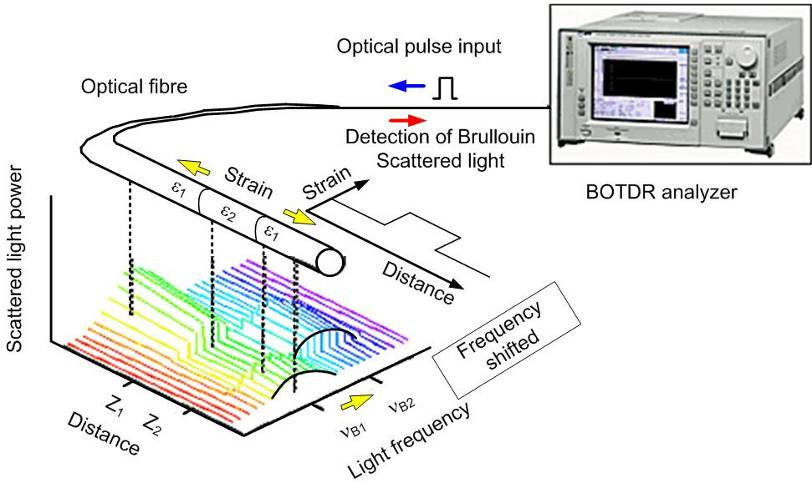The Importance of an Optical Fibre Diameter Analyser in Testing Environments
The Importance of an Optical Fibre Diameter Analyser in Testing Environments
Blog Article
Optimize Your Fibre Optic Efficiency: Understanding Optical Fibre Diameter Analyser Technology
The efficiency of fiber optic systems is critically influenced by the accuracy of their size, a variable frequently forgot in the pursuit of optimal signal honesty. Comprehending the innovation behind optical fibre diameter analysers exposes the elaborate equilibrium in between measurement precision and manufacturing quality. These tools not just enhance conformity with industry standards yet likewise offer real-time insights that can preemptively resolve potential problems. The effects of their use expand past mere measurement; they can fundamentally alter the landscape of fiber optic effectiveness. What aspects should one think about to harness their full potential?
Relevance of Optical Fiber Diameter
The diameter of optical fibre plays a critical role in establishing the efficiency and performance of communication systems. It affects several key specifications, including the mode of light breeding, attenuation, and data transfer capability. Larger diameters normally allow for several light modes, assisting in greater information transmission rates. On the other hand, smaller sized diameters tend to support less modes, which can enhance signal quality and lower crosstalk.

In addition, comprehending the size's implications can lead to cost financial savings by decreasing the demand for signal amplification and repeaters in considerable networks (optical fibre diameter analyser). In conclusion, the relevance of optical fibre size can not be overstated, as it straight influences the overall efficiency and reliability of modern communication systems

How Size Influences Signal Quality
Signal top quality in optical fiber systems hinges dramatically on the diameter of the fibre. A smaller diameter can lead to higher depletion prices, resulting in signal loss as light travels with the fiber.
Conversely, larger diameters normally permit boosted light capture and decreased modal dispersion, improving signal clarity. In multimode fibres, a larger core size can support several light settings, however it may also present intermodal diffusion, which can degrade signal high quality. Picking the optimum fibre diameter is important for achieving the wanted efficiency in specific applications.
Furthermore, the interaction in between the fibre diameter and the wavelength of the light made use of plays a crucial duty in determining the effective transmission distance and overall signal honesty. Therefore, recognizing just how fibre size impacts signal top quality is crucial for network designers and designers making every effort to enhance optical fibre systems for dependable, high-speed data transmission.
Review of Diameter Analyser Modern Technology
In numerous optical fiber production procedures, precise measurement of fiber diameter is essential for ensuring regular performance and top quality (optical fibre diameter analyser). Diameter analysers are sophisticated tools created to examine the physical measurements of optical fibers with high precision. They employ advanced optical and laser innovations to gauge the size, ovality, and concentricity of the fibre, thus giving important information for quality assurance
These analysers can operate in-line during the manufacturing process or as part of off-line testing protocols. In-line systems allow real-time monitoring, enabling makers to adjust parameters instantly, thus preserving optimum production conditions. Off-line analysers, on the other hand, supply detailed evaluations of sets, ensuring that any variances from specified tolerances are recognized and resolved.
Diameter analysers dramatically add to the reduction of defects in optical fibres, improving overall product dependability. By regularly determining vital view criteria, these modern technologies assist in compliance with sector requirements and requirements. As the demand for high-performance optical fibres proceeds to climb, the function of size analysers comes to be increasingly essential in achieving the preferred quality and performance criteria in fibre optic systems.
Secret Attributes of Fiber Size Analysers
Although different designs of fiber size analysers exist, they frequently share several essential functions that enhance their capability and integrity. Among one of the most substantial attributes click for info is high-resolution measurement capabilities, which make sure specific diameter analyses, crucial for maintaining quality assurance in fiber manufacturing. Additionally, lots of analysers include sophisticated optical sensing units designed to spot minute variations in fibre size, thus offering vital data for process optimization.
An additional essential attribute is real-time surveillance, allowing drivers to receive prompt feedback on fiber diameter throughout the manufacturing process (optical fibre diameter analyser). This capability helps with quick adjustments and minimizes the possibility of issues. Many analysers likewise come outfitted with easy to use interfaces, allowing drivers to easily navigate through setups and information results
Additionally, robust information storage space and evaluation functionalities are essential for tracking historical efficiency trends and making certain conformity with industry requirements. Some versions also provide connection options for integration into existing production control systems, enhancing overall operational performance. Portable and mobile layouts allow for flexible release within production environments, making certain that high quality assurance processes are smooth and reliable. These attributes jointly add to the effectiveness of fibre diameter analysers in optimizing fibre optic efficiency.
Finest Practices for Fibre Optimization

First, normal calibration of optical fibre diameter analysers is important. This makes sure precise dimensions and reduces potential disparities that could influence performance. Next off, maintaining a clean functioning setting is vital; dirt and pollutants can bring about indicate deterioration.
Furthermore, it is essential to pick fibres that meet specific application needs. This involves reviewing variables such as depletion, data transfer, and ecological problems. Correct installation strategies need to also be abided by, including avoiding sharp bends and too much tension, which can endanger fibre stability.
Moreover, employing sophisticated monitoring systems can assist in real-time efficiency assessments, enabling prompt identification of issues. Routine screening and maintenance must be conducted to make certain that fibers continue to be within optimum functional criteria.
Finally, training personnel on the most up to date fiber optimization innovations and methodologies will enhance their capacity to carry out effective techniques. By following these finest methods, organizations can substantially boost the performance and life expectancy of their optical fibre systems, guaranteeing effective interaction and information transfer.
Conclusion
To conclude, the assimilation of optical fibre size analyser technology is critical for taking full advantage of fiber optic efficiency. By ensuring specific dimensions of fibre measurements, these analysers considerably improve signal high quality and minimize losses during information transmission. Regular calibration and maintenance of the analysers are crucial to support optimal performance and conformity with market standards. Eventually, More Info the application of this technology assists in enhanced information transmission rates and enhances signal integrity, contributing to the general efficiency of fiber optic systems.
Signal top quality in optical fiber systems hinges considerably on the size of the fibre.In lots of optical fibre manufacturing processes, precise measurement of fiber size is vital for ensuring constant performance and high quality. As the need for high-performance optical fibers continues to climb, the role of diameter analysers becomes progressively essential in achieving the desired top quality and efficiency criteria in fiber optic systems.
These functions jointly contribute to the efficiency of fibre size analysers in enhancing fiber optic performance.
In verdict, the assimilation of optical fiber diameter analyser technology is important for taking full advantage of fibre optic performance.
Report this page